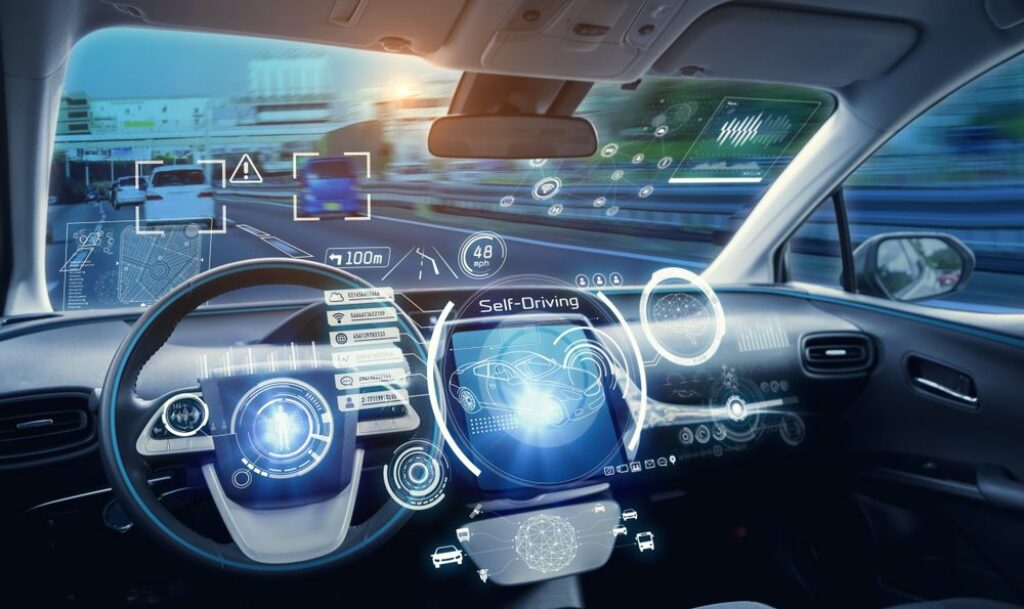How Computer Technology in Cars Enhances the Pleasure of Driving
Many people rely on having a car for their transportation needs, including getting to work or school and taking care of basic errands like food shopping. Although the car is a necessity for these people, it also can serve as a source of enjoyment.
In recent years, computer technology has revolutionized the automotive industry, enhancing the pleasure of driving in numerous ways. From advanced driver assistance systems to entertainment and connectivity features, computers have become an integral part of modern cars. This article will explore how computer technology in cars makes driving more enjoyable, providing specific examples, features, and benefits.

Advanced Safety Systems
The use of computer technology in cars has revolutionized the driving experience by enhancing safety systems, making driving safer and more enjoyable. Advanced safety systems, such as collision avoidance systems and lane departure warning systems, utilize computer technology to monitor the surroundings and alert the driver of potential dangers. For example, autonomous emergency braking (AEB) systems use sensors and cameras to detect obstacles in front of the vehicle and automatically apply the brakes if a collision is imminent. This feature provides an additional layer of protection and peace of mind for drivers, reducing the risk of accidents and enhancing the overall driving experience.
Intelligent Navigation and GPS
Computer technology has also greatly improved navigation systems in cars, making it easier for drivers to find their destinations and enjoy a stress-free driving experience. Intelligent navigation systems use GPS technology and real-time traffic data to provide accurate and up-to-date route guidance. These systems can suggest alternative routes to avoid traffic congestion, saving drivers time and frustration. Additionally, voice-guided directions and visual displays make it effortless for drivers to follow the recommended routes, allowing them to focus on the road and enjoy a smoother and more pleasant driving experience.
Enhanced Driver Assistance
The development of computerized enhanced driver assistance systems, which provide additional support and assistance to drivers, enhancing the pleasure of driving. For example, lane-keeping assist systems use cameras and sensors to detect lane markings and provide gentle steering inputs to keep the vehicle centered within the lane. This feature reduces driver fatigue and improves overall driving comfort, allowing drivers to enjoy a more relaxed and enjoyable driving experience. Similarly, blind-spot monitoring systems use sensors to detect vehicles in the blind spots and provide visual or audible warnings, helping drivers make safer lane changes and improving their confidence on the road.
Seamless Connectivity and Infotainment
Many cars now come equipped with Bluetooth connectivity, allowing drivers to synchronize their smartphones and access hands-free calling and audio streaming. This feature enables drivers to stay connected while keeping their hands on the wheel and eyes on the road, enhancing both convenience and safety. Additionally, advanced infotainment systems provide access to a wide range of entertainment options, such as streaming music, podcasts, and even social media integration. These features make long drives more enjoyable and entertaining, enhancing the driving experience.
Adaptive Cruise Control and Traffic Jam Assist
Computer technology has also introduced adaptive cruise control and traffic jam assist systems, which improves convenience and reducing driver fatigue. Adaptive cruise control uses sensors and radar to maintain a safe following distance from the vehicle ahead, automatically adjusting the speed to match the traffic flow. This feature eliminates the need for constant speed adjustments, making long highway drives more comfortable and enjoyable. Traffic jam assist systems take this a step further by adding steering assistance, allowing the vehicle to follow the traffic flow in congested situations. This feature reduces driver stress and allows drivers to relax during stop-and-go traffic, making driving less taxing.
Vehicle Performance Optimization
Automobile hi-tech also provides performance optimization, which improves the car’s performance and fuel efficiency. Modern cars use sophisticated computer systems to monitor and control various aspects of the vehicle, such as engine performance, transmission, and suspension. For example, electronic stability control systems continuously monitor the vehicle’s behavior and can automatically apply brakes to individual wheels to help maintain control in emergency situations. Additionally, engine management systems optimize fuel injection and ignition timing to improve fuel efficiency and performance. These advancements not only enhance the driving experience but also contribute to a greener and more sustainable future.
Personalized Comfort and Convenience
Modern cars also offer personalized comfort and convenience features. Many now offer features such as driver memory settings, which allow drivers to save their preferred seating positions, mirror adjustments, and climate control settings. This feature eliminates the hassle of readjusting settings every time a different driver gets behind the wheel, enhancing convenience and comfort. Additionally, some cars come equipped with adaptive lighting systems that adjust the direction and intensity of the headlights based on driving conditions. This feature improves visibility and safety, particularly during nighttime driving, making driving less stressful.
Conclusion
Computer technology has significantly enhanced the pleasure of driving in modern cars. From advanced driver assistance systems and infotainment features to connected car technology and adaptive lighting systems, computers have revolutionized the driving experience. These technologies not only improve safety and convenience but also make driving more enjoyable and entertaining. As computer technology continues to advance, we can expect even more exciting developments in the automotive industry, further enhancing the pleasure of driving.
